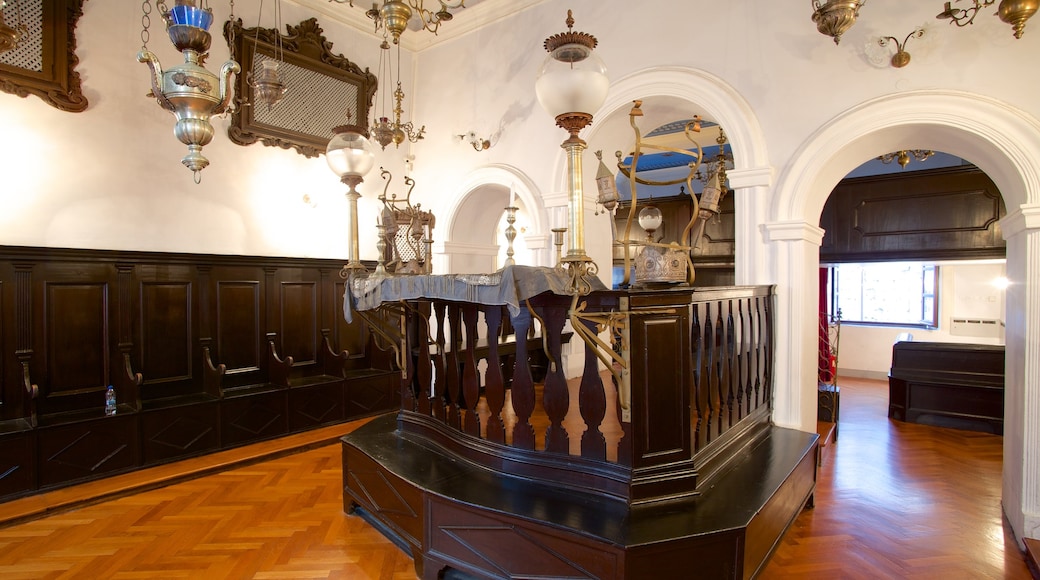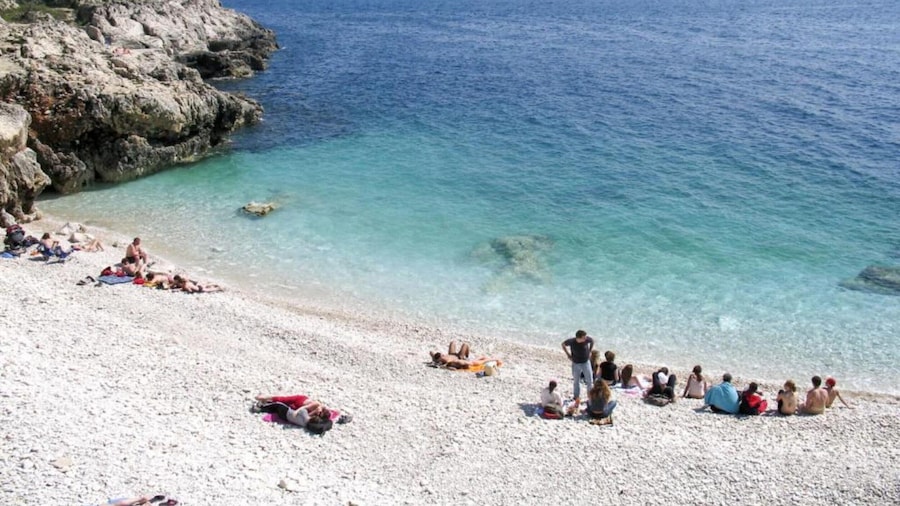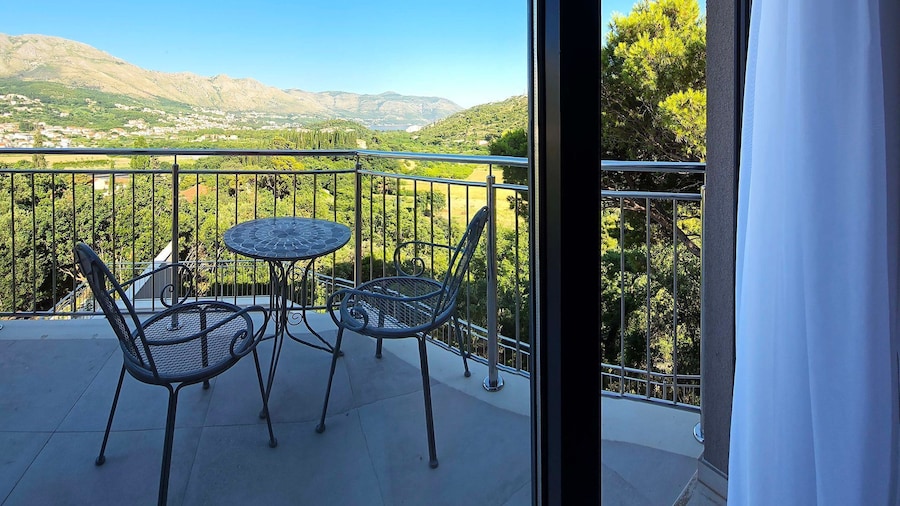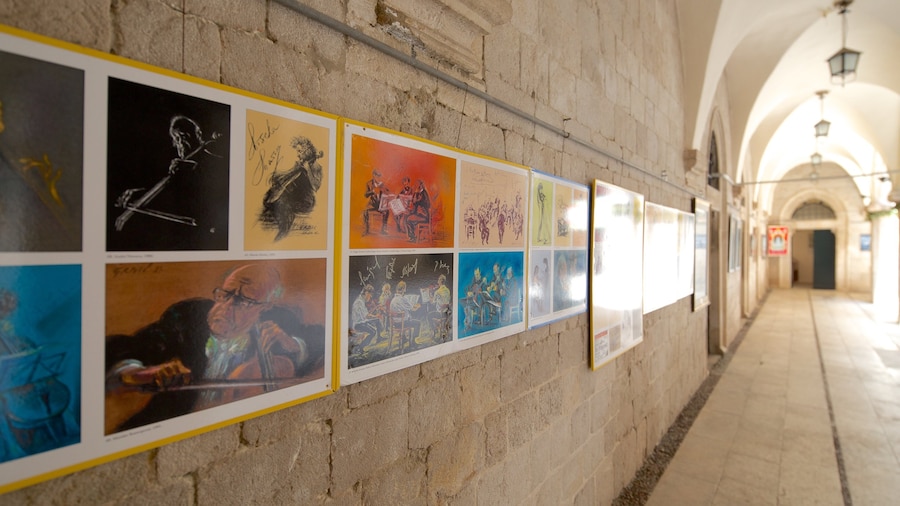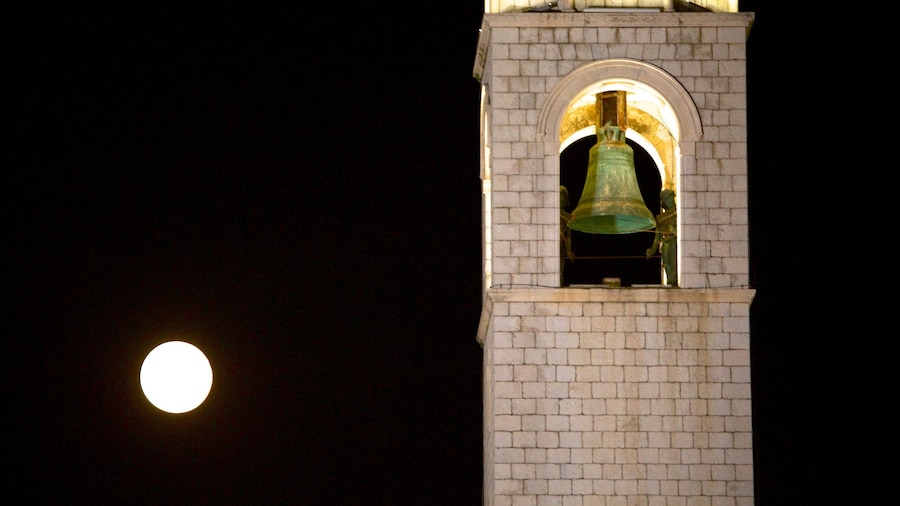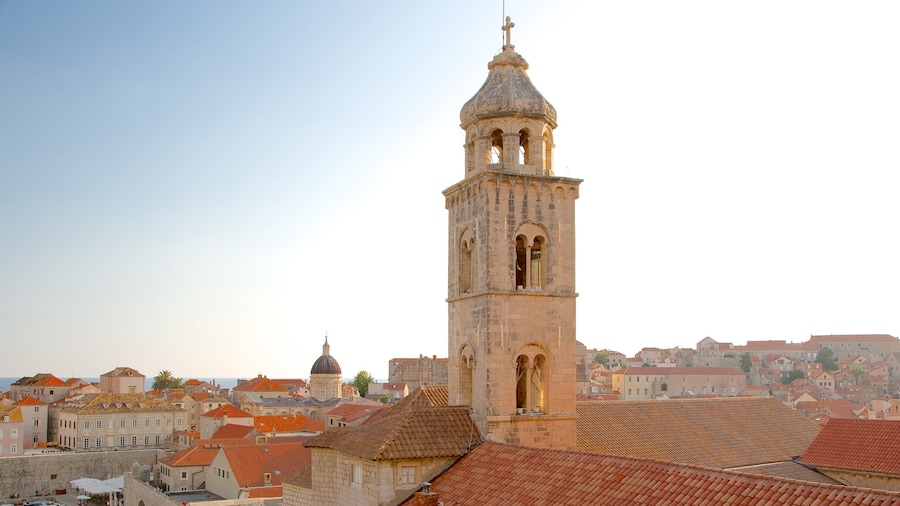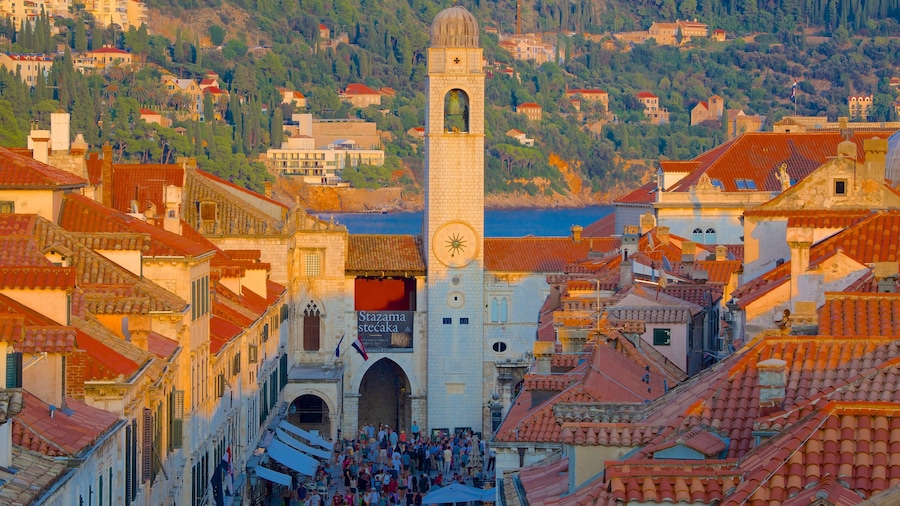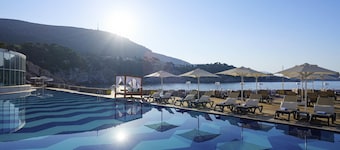Learn about the origin and development of the Jewish community in Dubrovnik when you visit this small synagogue and museum.
Established in the middle of the 14th century, Dubrovnik Synagogue is one of the oldest synagogues in Europe. The building is still a place of worship, but it also houses a small museum dedicated to the history of Dubrovnik’s Jewish community.
The museum is on the first floor of this two-story building. On your way in, read the sign above one of the windows that says, “Be blessed upon your arrival”. Inside, you will find the interior decorated with 17th-century furnishings, velvet drapes, a grand chandelier and gold detailing. Give yourself at least an hour to tour the exhibits.
Look at the museum’s Spanish, French and Italian Torah scrolls from the 13th to the 17th centuries. Admire the Torah covers, many of which are made from silk embellished with gold embroidery.
Be sure to see one of the museum’s most valuable pieces, a 13th-century Moorish carpet with a detailed floral pattern. The carpet is said to have been a gift given to a Jewish doctor by Queen Isabella of Spain. Among the other items are silver Torah crowns and leather prayer books.
Aside from artwork, the museum contains a number of interesting old documents. See papers that recorded the city’s first registered Jewish citizen in 1421 and the establishment of the Jewish ghetto. There is also a list of Jewish earthquake victims from 1667. The building escaped major damage during the natural disaster, although it later received a direct hit during the Siege of Dubrovnik in the early 1990s.
There are also documents that outline the official restrictions placed on the Jewish community in the 1940s and lists of the names of Holocaust victims.
The Dubrovnik Synagogue is located on Žudioska Ulica, which can be accessed from the main street running through the old town. The museum is open every day except Saturday and Sunday and there is a small admission fee to pay.
